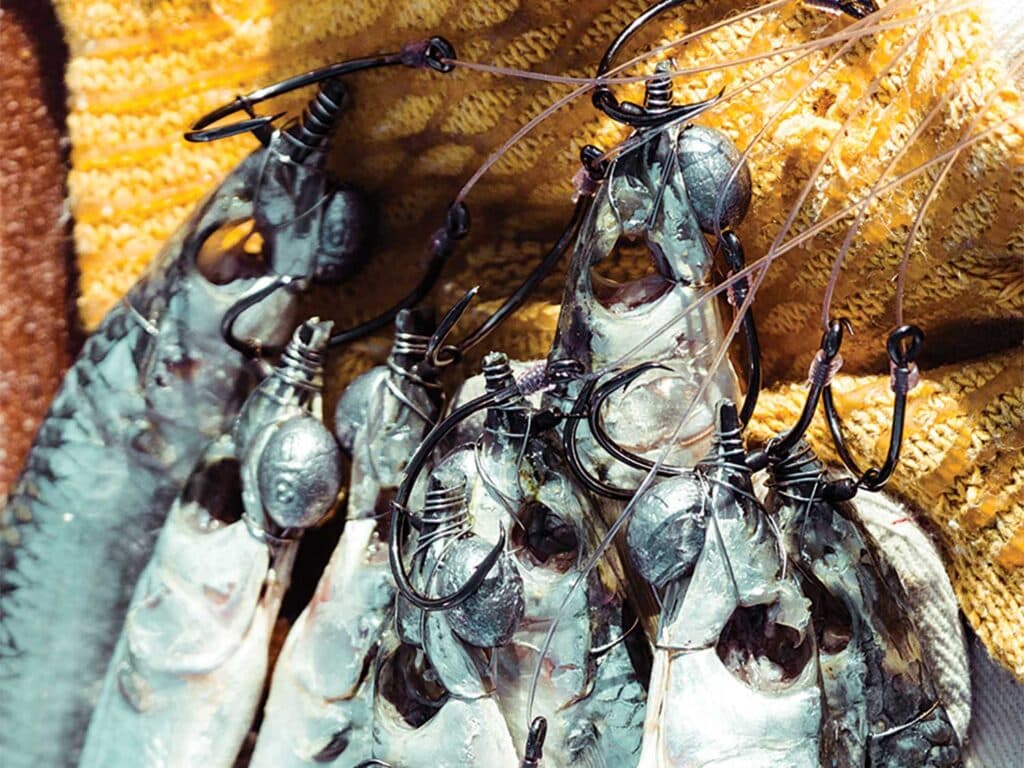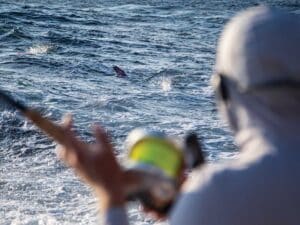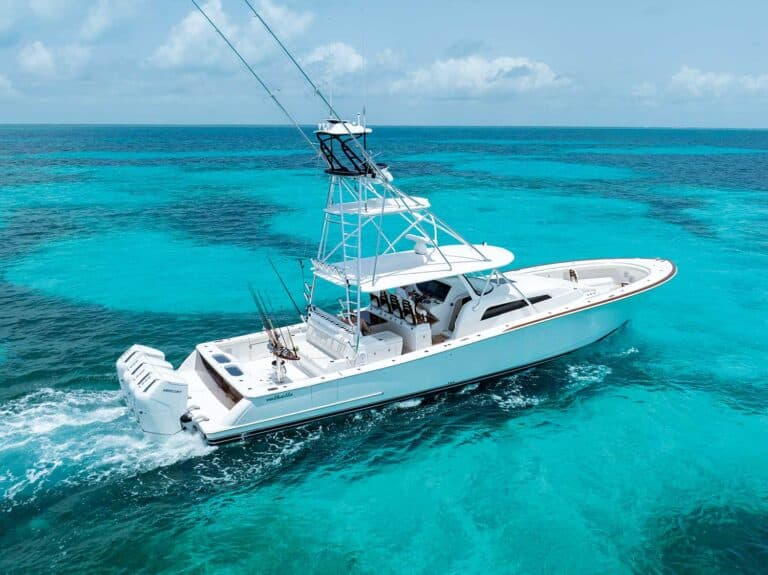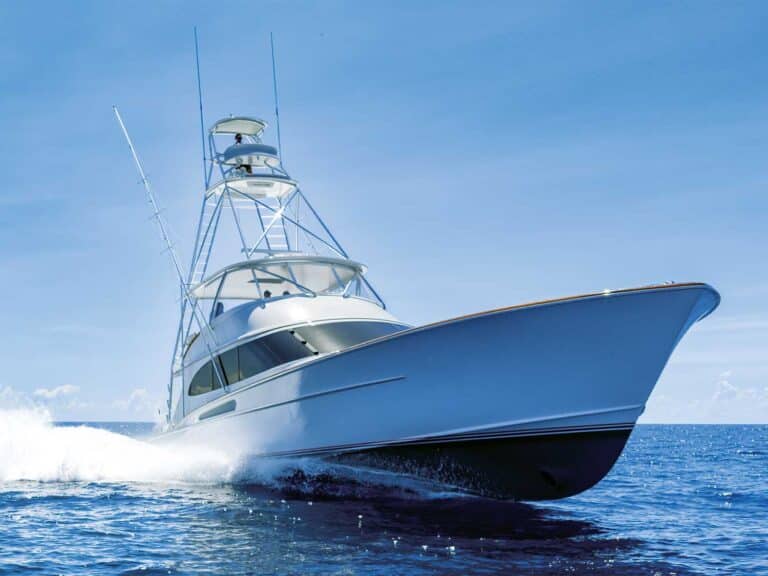
Subscribe to Marlin magazine and get a year of highly collectible, keepsake editions – plus access to the digital edition and archives. Sign up for the free Marlin email newsletter.
When fishing in a location like Palm Beach, Florida, getting bait is as easy as heading to one of the many tackle shops or ship’s stores. For traveling operations, however, that isn’t always the case. Pulling a quality spread of fresh baits means bringing what you need or making arrangements to buy or catch it once you get where you’re going. There are a range of variables at play—logistics, capacity and method of travel. The style of fishing also plays a large role in how much bait you need and how you provision for travel. Here’s some perspective from three who know this game well.
Joe Byrum, Sea Weez (mate)
With Capt. Ross Finlayson at the helm, Sea Weez is a veritable globe-trotting sport-fishing operation. The boat is currently in the South Pacific. It has fished Central America and plenty of other places. Byrum shares his perspective on the program’s approach to bait.
“We have brought ballyhoo to Costa Rica and Panama. It can be a pain to travel with bait on the yacht transport ship. You need to have a rider on the boat on the ship to keep your power on,” Byrum explains. “Sometimes you can put bait in the ship’s freezer, if you’re able. But that’s not always possible.

“When we are going to the Bahamas on our own bottom, we’ll pack the freezers with ballyhoo, little bonitos and mackerel,” Byrum says. While the ability to travel with bait depends on the method of transport, Sea Weez is not as reliant on bait as many operations.
“We really don’t carry as much bait as most boats. Most of the time, we are fishing heavy tackle. When we get to our destination, we will catch bait there—sometimes small tuna. When we’re traveling to the Azores, Tahiti or the Canaries, we’re mostly lure-fishing with pitch baits mixed in,” Byrum says. “We bring all kinds of things to catch bait once we get there: lots of sabikis of all sizes, planers, and jigs to catch bait, lots of little squid skirts and dusters. We’ll carry a bait pen with us at times and leave it at the dock.”

Capt. Fin Gaddy, Qualifier
In addition to his charter fishing out of Oregon Inlet Fishing Center in Manteo, North Carolina, Capt. Fin Gaddy fished the sailfish bite in Isla Mujeres, Mexico, for more than 10 seasons.
“We’d have a chest freezer standing on the back deck and load it to the gills. Baitmasters would meet us at Miami Beach Marina, and we’d load all the ballyhoo we could carry. We would take the ballyhoo out of the boxes and layer them so they fit better,” Gaddy explains. He’d make the trip from North Carolina with a stop in Miami before popping across the Gulf. “Twelve out of the 13 years we went, I’d call Rey at Baitmasters.”
Getting the bait is one thing, but being able to keep it frozen for a season is another, as Gaddy is quick to point out. “We had a guy who would make a cover for the freezer. We taped the extension cords to keep it from getting wet—that’s what kills them. We’d use the freezer for the season and then sell it to someone down there,” Gaddy chuckles.

Capt. Rick Peeples, Pryorities
Capt. Rick Peeples is a veteran skipper of traveling operations. His approach to provisioning for travel speaks to his experience and skill. Pryorities has fished the Dominican Republic and Bahamas. The operation is currently building a Garlington with plans to take it to the South Pacific.
“How do I get bait before a trip? Call Baitmasters and order!” Peeples says with a laugh. “The DR is a bit more complicated because we will be down there for several months. But I figure out how many days I’ll fish. I figure on 50 ballyhoo per day of fishing. I also figure on 12 mackerel per day for teasers. Some days we’ll use more, some days we’ll use less.”
Peeples calculates his anticipated bait needs and uses this to inform his order. “I’ll put the bait in the cockpit freezers. What I can’t fit, I take back to Baitmasters. When I start to run low, they pack it up and have it ready for someone to pick up and fly down with as a checked bag.”
Preparation is key. And for globe-trotting crews, dialing in a reliable bait plan is just as important as rigging the spread when you get there.







